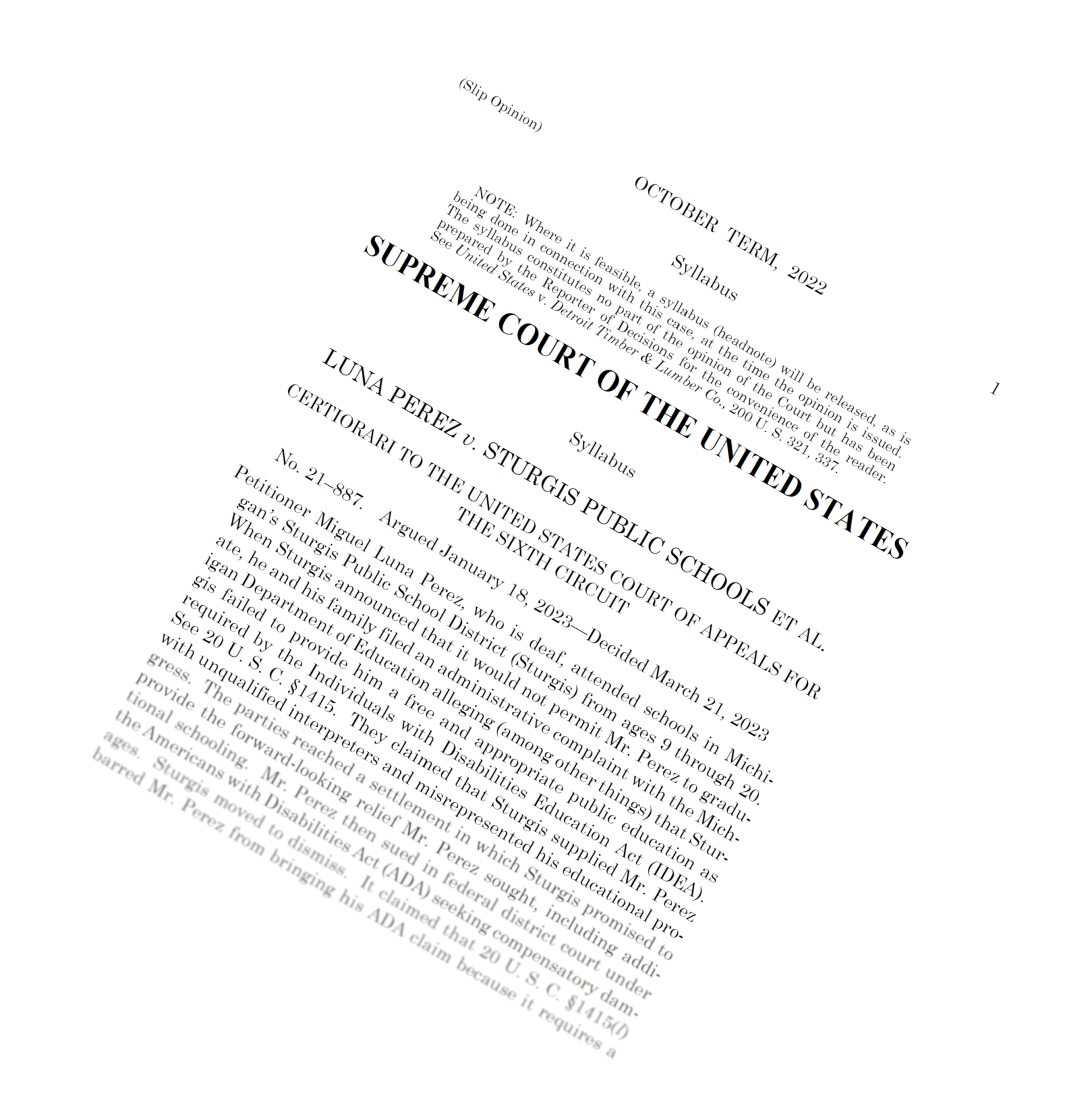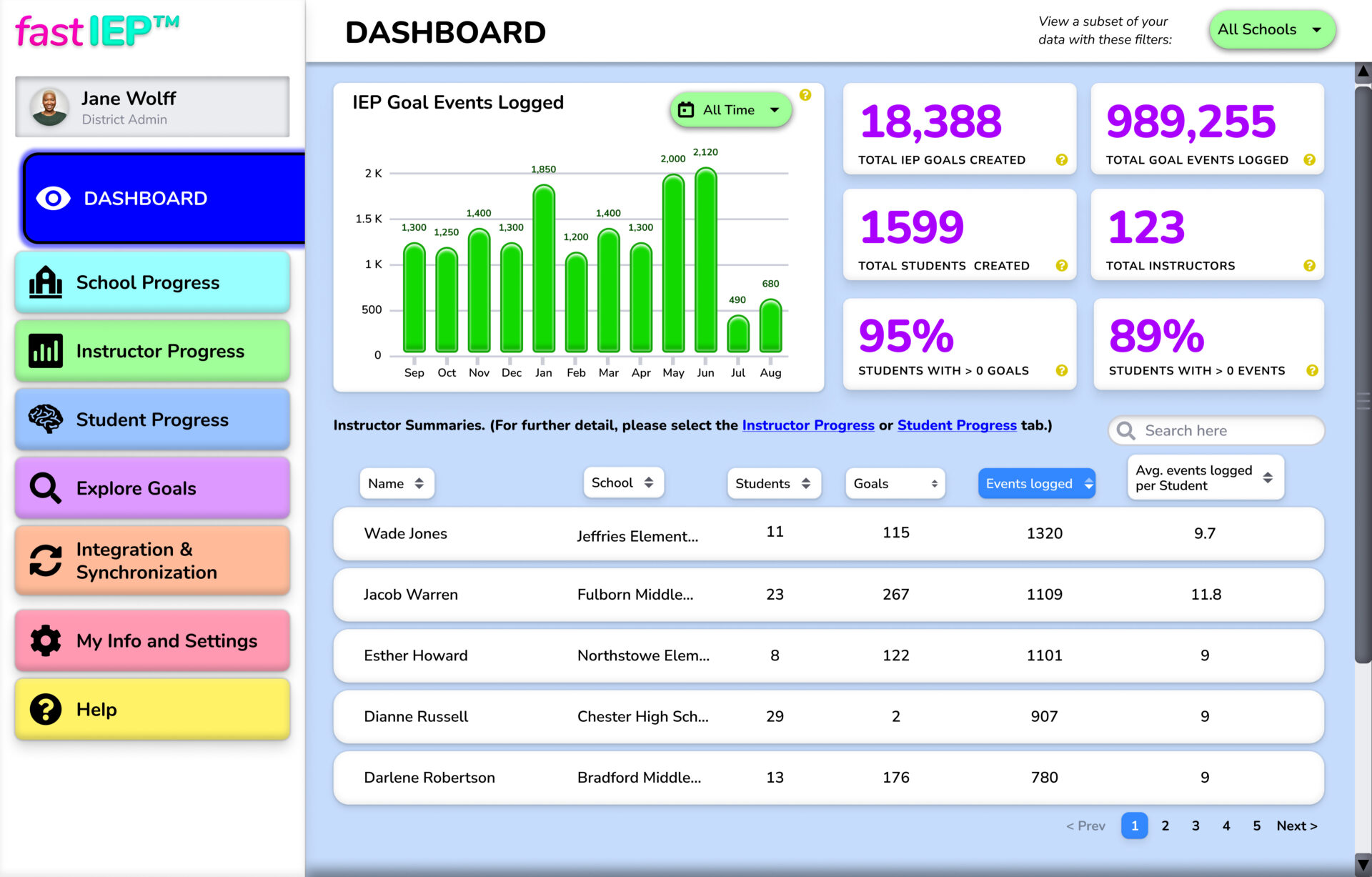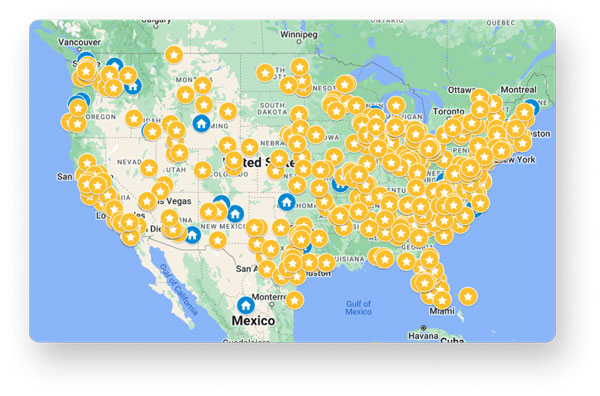
LEGAL ANALYSIS
Perez v. Sturgis Supreme Court Decision
What does it mean for your district’s IEP Progress Monitoring Compliance program?
March 22, 2023
Introduction
Yesterday’s Perez v. Sturgis Supreme Court Decision has brought to the forefront the critical importance of compliance with the Individuals with Disabilities Education Act (IDEA) in public schools, particularly when it comes to progress monitoring for students with Individualized Education Programs (IEPs). This landmark ruling serves as a wake-up call for all public schools to ensure they are properly implementing and monitoring IEPs, as failure to do so can result in serious legal and financial consequences.
In the Perez v. Sturgis case, the plaintiffs held that the district had consistently sent home report cards and progress reports indicating that their son was making typical progress for his grade level, while in reality his accomodations were not working at all and he was not actually progressing as indicated. This was only discovered by the parents as their son approached high school graduation and was denied his diploma by the school.
Supreme Court to Public School Districts: “You can be sued under the ADA”
The scale of the Perez v. Sturgis Supreme Court decision cannot be understated. For the first time, at the Supreme Court level, a precedent has been set that allows parents to sue school districts for damages under the Americans with Disabilities Act (ADA) independently and in addition to any due process available to them under the IDEA act.
Let that sink in.
From now on, the floodgates to ADA lawsuits are open. If you don’t communicate openly, frequently and accurately with parents of children with special needs, the first communication you receive from upset parents may be an ADA claim for damages. The Supreme Court has said that parents no longer need to pursue redress under the IDEA and can instead (or, simultaneously) pursue damages under the ADA.
Now, more than ever, it is essential to provide accurate progress reports to parents. Don’t forget, in Perez v. Sturgis, the district was sending reports as required by the IDEA, but the reports weren’t accurate.
Most District IEP Software CANNOT Help
You may be thinking that your district’s existing IEP software will ensure that you maintain compliance with the Perez v. Sturgis and the previous Endrew F. decisions, but unfortunately this is not the case.
Most district IEP software only handles authoring and reporting, but not day-to-day progress monitoring.

Software such as PowerSchool Special Programs, Frontline, Embrace, Goalbook, Spedtrack and others are good at helping author compliant IEPs and creating compliant IEP reports, but they are not designed to be used by teachers in the classroom to record IEP progress as it happens. So, where does the data for these reports come from? For the most part, teachers are left on their own to take notes and record progress the best they can. A recent survey found that 1 in 4 teachers don’t record IEP progress at all, and just try to remember their students’ progress when reports are due. Of teachers who do record progress, most record it less than once a week, and 80% use paper, binders, notebooks or spreadsheets, which may or may not be acceptable evidence in a legal action.
In Perez v. Sturgis, the school was sending compliant IEP progress reports to the parents all along, but the data that went into those reports was inaccurate. This goes to show that all the fancy IEP reporting software in the world will not help you be compliant; you need to provide your teachers with a data collection and progress monitoring tool that can be used in the classroom, in real time. Recording data after the fact is a recipe for disaster.
Argument 1: Legal Ramifications
The Perez v. Sturgis Supreme Court decision highlighted the legal ramifications for public schools that fail to adhere to IEP progress monitoring requirements. In this case, the Court ruled in favor of the Perez family, finding that Sturgis Public Schools had not provided their child with a Free Appropriate Public Education (FAPE) as mandated by the IDEA. The Court found that the school’s failure to closely monitor the student’s IEP progress constituted a violation of the law.
This decision serves as a clear reminder that public schools are legally obligated to adhere to IDEA requirements, and that failure to do so can result in costly legal battles and potential damages. To avoid such consequences, public schools must prioritize IEP progress monitoring and compliance with the law.
Argument 2: Impact on Student Outcomes
The Perez v. Sturgis decision also emphasized the importance of IEP progress monitoring for the well-being and success of students with disabilities. The Court’s ruling underscored that inadequate progress monitoring can negatively impact a student’s educational progress and development, as it prevents educators and parents from making informed decisions about the necessary adjustments to the IEP.
By diligently monitoring IEP progress, schools can identify areas where a student may be struggling and make necessary modifications to the IEP to better support the student’s unique needs. Consequently, strict IEP progress monitoring compliance is essential not only to meet legal requirements but also to ensure that students with disabilities receive the support they need to succeed.
Argument 3: Ensuring Accountability
The Perez v. Sturgis Supreme Court decision also highlights the importance of accountability for public schools when it comes to implementing and monitoring IEPs. The Court’s ruling serves as a strong reminder that schools must be held accountable for their responsibilities under the IDEA, and that parents and advocates can take legal action if schools fail to meet these obligations.
By holding schools accountable for IEP progress monitoring compliance, the Perez decision encourages public schools to prioritize the needs of students with disabilities and to allocate resources more effectively to support their education.
Conclusion
The Perez v. Sturgis Supreme Court decision underscores the significance of strict IEP progress monitoring compliance in public schools. By ensuring adherence to legal requirements, improving student outcomes, and promoting accountability, this decision serves as a powerful reminder of the critical role that progress monitoring plays in the education of students with disabilities. Public schools must take this ruling as an opportunity to reevaluate their current IEP progress monitoring practices and make any necessary changes to ensure they are in full compliance with the law and are providing the best possible support to their students.
fastIEP is the only software tool that enables administrators to monitor and track IEP progress monitoring compliance across their entire district in real time
fastIEP is used by thousands of districts in all 50 states in combination with their IEP authoring and reporting tools to enable teachers to record IEP progress easily and quickly, while enabling administrators to monitor teachers’ compliance with IEP progress monitoring requirements.
Can you answer these questions?
- How often, on average, are teachers recording IEP progress in your district?
- Which teachers didn’t record any IEP progress last week?
- Which students have had little or no IEP progress recorded in the past month?
- Which students are at risk of not achieving their IEP goals?



